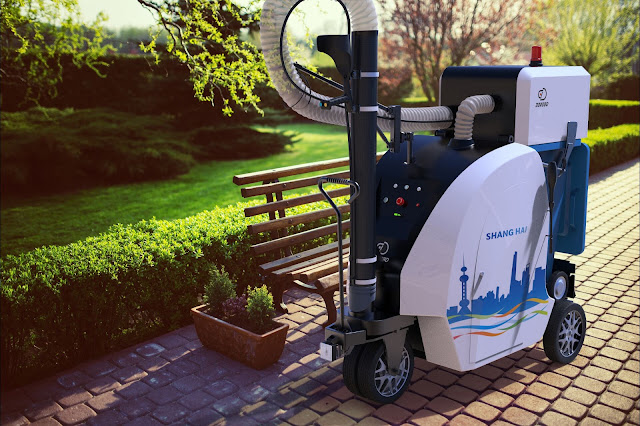Street vacuum cleaner, also known as an urban vacuum cleaner or outdoor waste vacuum cleaner, etc., is a new type of cleaning equipment. It designed for picking up all kinds of waste that can pass through a tube 12cm in diameter. It deals efficiently with both industrial and urban waste: paper, cardboard, cigarette packets and butts, cans and glass, plastic or metal bottles, dog feces, dead leaves, waste trapped in tree grills, wood, steel and aluminum chips etc. Street vacuum cleaners are not very common in China, but in developed countries, it can be seen everywhere, such as airports, parks, warehouses, scenic spots, alleys, etc.
Street vacuum cleaners are fully enclosed, centralized collection, avoiding secondary dust pollution, significantly reducing the concentration of TSP and PM2.5, and effectively improving the level of refinement operations. In addition, the vehicle also uses wireless mobile communication technology to transmit job data and images in real time to realize the “Internet of Things & Smart Sanitation” management mode.
Similar to the working principle of the traditional vacuum cleaner, the street vacuum cleaner uses the motor to drive the fan impeller to rotate at a high speed, so that the air in the impeller is discharged at a very high speed, and a transient vacuum is formed in the machine to form a certain negative pressure difference with the outside. Under the action, garbage is sucked into the machine to achieve the purpose of cleaning and vacuuming.
The street vacuum cleaner is mainly composed of a vacuum system, water cleaning system, air filtration system, garbage collection system, energy system, and follow-up motion system. The various sections are as follows:
1. Vacuum system: It consists of a fan and a series of pipes to provide enough vacuum for the vacuum cleaner to absorb the garbage on the road.
2. Water cleaning system: It consists of a water tank, booster pump, high-pressure water gun and nozzle. The main function is to use high-pressure water to clean road surface stains and settle dust.
3. Energy system: It consists of a battery and related control components to provide power for the vacuum cleaner.
4. Follow the movement system: It consists of the drive wheel, the steering wheel and the following motion control system. When the operator holds the follow-up signal transmitter, the vacuum cleaner will recognize the operator and follow his movements even in a crowded city context.
5. Garbage collection system: It consists of garbage bins and related sensors. The sensors can identify the height of the garbage in the bin and promptly remind the operator to handle the garbage.
6. Air filtration system: Filter the air sucked into the vacuum cleaner to prevent dust from entering the fan and discharging it into the air again.




No comments:
Post a Comment